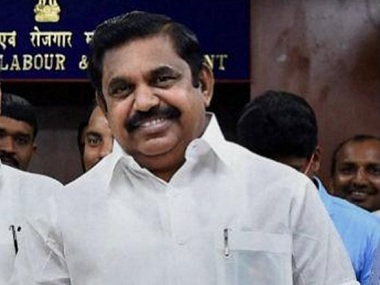At 6.10 pm on Tuesday, M Karunanidhi breathed his last. But he was not finished. In a rather petulant turn of events, the 94-year-old was made to fight one final battle against his arch political rivals, the AIADMK. With the Edappadi Palaniswami regime refusing Karunanidhi a burial at the Marina Beach in Chennai, a VVIP memorial zone of sorts for political titans of Dravidian lineage, the Madras High court worked overtime to decide where the former chief minister would be buried. Sixteen hours later, Karunanidhi won. The leading light of the Dravidian movement acquired the legal nod to have his final resting place next to his mentor, CN Annadurai at the Marina. The question that arises is why EPS had to behave so gracelessly, a pointer to the politics of acrimony and vitriol the DMK and the AIADMK have always practiced against each other. To do so within hours of Karunanidhi’s death came across to neutral observers of Tamil Nadu politics as petty politics and in bad taste. [caption id=“attachment_4354235” align=“alignleft” width=“380”] File image of chief minister E Palaniswami. PTI[/caption] But look at it from Palaniswami’s point of view. He wasn’t thinking of the non-party voter at all. The chief minister saw this as an opportunity to curry favour with the AIADMK cadre that wears its dislike for Karunanidhi on its sleeve. Given the fissures in the AIADMK, with many in the rank and file looking to migrate to TTV Dhinakaran’s outfit, EPS saw this as an opportunity to show that he can stand up to the DMK, a la Jayalalithaa. To tell them that he is not a political pygmy, that he won’t budge an inch, or give an inch at the Marina in this case. Appealing to an anti-Karunanidhi sentiment among the AIADMK, therefore seemed like a gambit worth employing. All her life in politics, Jayalalithaa adopted an extremely adversorial position vis-a-vis the DMK and Karunanidhi in particular. It is anyone’s guess as to whether Jayalalithaa would have behaved in a similar manner had she had been in Palaniswami’s shoes. In fact, it is quite possible that even the DMK may have acted as EPS did. At a larger level, EPS was trying to erroneously convey that Karunanidhi did not fit into the pantheon of Dravidian icons and that the place is reserved only for the troika of Annadurai, MGR and Jayalalithaa. Much of it was also tit-for-tat. The DMK had objected to the memorial for Jayalalithaa and the unveiling of her portrait in the Tamil Nadu Assembly on the grounds that had she been alive, she too would have been convicted and sentenced for four years like her co-accused VK Sasikala in the Disproportionate Assets case. Throwing the protocol manual at the DMK was therefore to make MK Stalin and Company sweat. Dhinakaran sensed it. Which is why he refused to wade into the controversy after he paid his respects to Karunanidhi at Rajaji Hall on Wednesday. Dhinakaran knew a pro-Karunanidhi position, even though it may endear him to the public at large, could be a risky take within the larger AIADMK parivaar. Supporting Palaniswami’s decision would have made him look boorish and lacking in decency at a time like this. Legally, the government was on a sticky wicket. It argued that only those who die as chief ministers deserved a place at the Marina. For VIPs out of power, Gandhi Mandapam was the designated place. The government lawyers also pointed out how Karunanidhi himself had not allotted the Marina to former chief minister Janaki Ramachandran, who was MGR’s widow. It was rather strange to see Janaki Ramachandran being compared to a colossus like Karunanidhi. But then this was not so much about legality but about doing the right thing. It was wrong to deny the five-time chief minister his rightful place just because he was not in office when he passed away. Moreover, Karunanidhi was not merely a politician. He was a literary scholar, poet, dramatist and storyteller who had played a key role in the development of Tamil Nadu. To subject his mortal remains to a wait in the corridors of the court, was crass and mean.
Apologists for the AIADMK however, saw a silver lining in the legal snub. They argued that EPS managed to get all the objections to the Jayalalithaa memorial withdrawn. It is a bit like shooting yourself in the foot and then feeling happy that you can claim insurance money.
EPS had in fact, employed a high-risk strategy. Apart from the legal option, Stalin could have also reached out to Narendra Modi with an appeal to him to use his good offices. Last November, the prime minister had visited Karunanidhi and in fact, invited the ailing DMK chief to stay for a few days with him at his residence in Delhi. Would EPS have turned down the prime minister’s request if it was made, is a matter of conjecture. When news of the verdict trickled in, Stalin held his stepsister Kanimozhi’s hands and wept at Rajaji Hall. For the DMK cadre, this was a very emotional scene to witness. And in the run-up to the 2019 election, it will only spur the rank and file to fight it well as a tribute to the departed leader.


)
)
)
)
)
)
)
)
)



